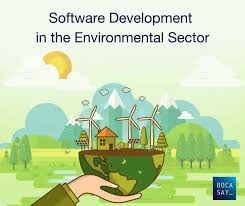“`html
The Interplay Between Environment and Development
The relationship between environment and development is a complex and crucial one that impacts the well-being of present and future generations. Development, often associated with economic growth and progress, must be pursued in a way that is sustainable and respects the natural environment.
Environmental degradation, such as deforestation, pollution, and climate change, poses significant challenges to development efforts. The depletion of natural resources not only threatens ecosystems but also jeopardizes the livelihoods of communities that depend on them for survival.
On the other hand, responsible development practices can enhance environmental conservation and support long-term sustainability. Investing in renewable energy sources, promoting green technologies, and implementing eco-friendly policies are essential steps towards achieving a harmonious balance between development goals and environmental protection.
Furthermore, addressing environmental issues is not just an ethical imperative but also an economic opportunity. Green industries have the potential to create jobs, stimulate innovation, and drive economic growth while mitigating the negative impacts of unsustainable practices on ecosystems.
In order to achieve sustainable development, policymakers, businesses, communities, and individuals must work together to prioritize environmental stewardship in all aspects of decision-making. By integrating environmental considerations into development strategies, we can build a more resilient and equitable future for all.
“`
5 Essential Tips for Sustainable Living and Environmental Stewardship
- Conserve energy by turning off lights and electronics when not in use.
- Reduce waste by recycling and reusing items whenever possible.
- Support sustainable practices such as buying local produce and products.
- Plant trees and create green spaces to improve air quality and biodiversity.
- Educate yourself and others about the importance of protecting the environment for future generations.
Conserve energy by turning off lights and electronics when not in use.
“`html
One simple yet effective tip for promoting a sustainable balance between environment and development is to conserve energy by turning off lights and electronics when not in use. By practicing this habit, individuals can reduce electricity consumption, lower carbon emissions, and contribute to environmental preservation. Conserving energy not only helps in mitigating the impacts of climate change but also leads to cost savings for households and businesses. Embracing such mindful actions in our daily lives plays a significant role in fostering a more sustainable future for generations to come.
“`
Reduce waste by recycling and reusing items whenever possible.
“`html
One effective tip for promoting a sustainable balance between environment and development is to reduce waste by recycling and reusing items whenever possible. By adopting a culture of recycling and reusing, we can minimize the strain on natural resources and reduce the amount of waste that ends up in landfills. This simple yet impactful practice not only conserves energy and raw materials but also helps to mitigate pollution and greenhouse gas emissions, contributing to a healthier environment for current and future generations.
“`
Support sustainable practices such as buying local produce and products.
“`html
Supporting sustainable practices, such as buying local produce and products, plays a vital role in promoting a healthy environment and fostering sustainable development. By choosing locally sourced goods, consumers can reduce the carbon footprint associated with transportation and support local farmers and businesses. This not only helps to preserve natural resources but also contributes to the economic growth of the community. Embracing sustainable consumption habits like buying local is a simple yet impactful way for individuals to make a positive difference in both the environment and the local economy.
“`
Plant trees and create green spaces to improve air quality and biodiversity.
“`html
Planting trees and creating green spaces are effective strategies to enhance air quality and promote biodiversity. Trees act as natural air purifiers, absorbing carbon dioxide and releasing oxygen, which helps reduce pollution and improve the overall quality of the air we breathe. Additionally, green spaces provide habitats for a variety of plant and animal species, contributing to biodiversity conservation. By incorporating more trees and green areas into urban environments and landscapes, we can create healthier ecosystems, mitigate climate change impacts, and enhance the well-being of both humans and wildlife.
“`
Educate yourself and others about the importance of protecting the environment for future generations.
“`html
One crucial tip for fostering the interplay between environment and development is to educate yourself and others about the significance of safeguarding the environment for future generations. By raising awareness about the importance of environmental protection, we can inspire action and promote sustainable practices that ensure a healthy planet for our children and grandchildren. Empowering individuals with knowledge about the impact of human activities on the environment is key to fostering a collective commitment to conservation efforts and responsible development practices.
“`

